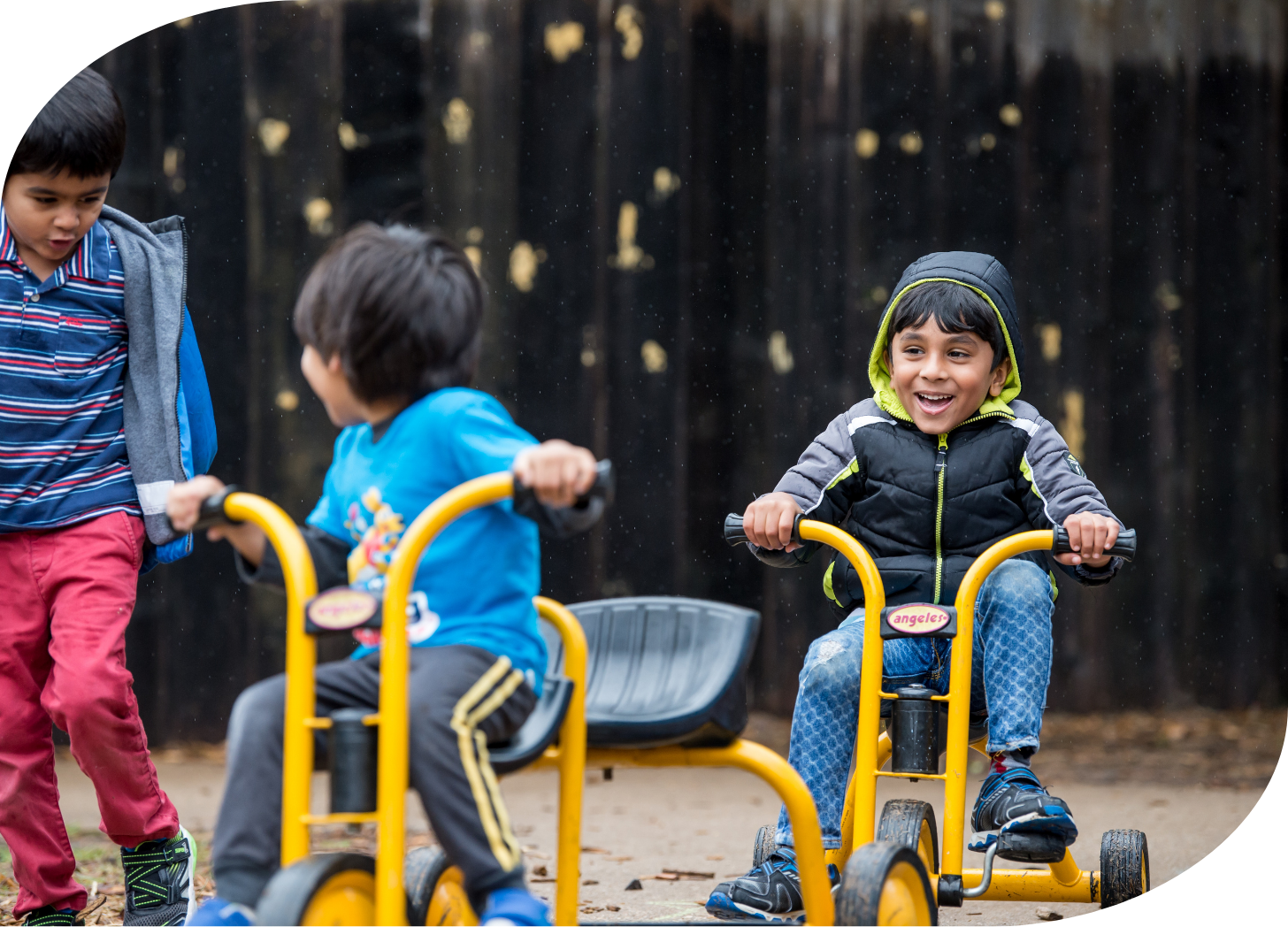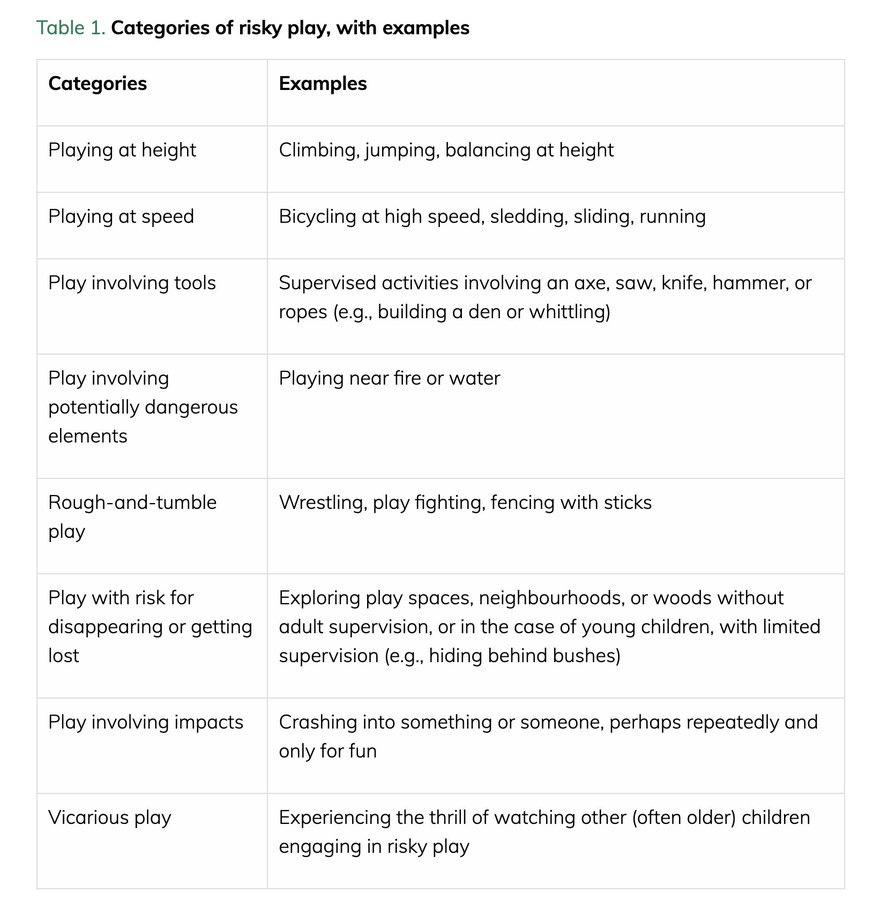Think back on your childhood. Most of us spent our days racing our friends on our bicycles, climbing the tallest trees, or exploring our neighborhoods — often unsupervised.
Would your childhood be acceptable under today’s parenting standards?
In recent years, our culture has shifted in an attempt to eliminate all risk. Every challenge or obstacle is viewed as being maximally dangerous (and therefore unacceptable).
Sadly, hovering over our children, refusing to let them do things independently, communicates that we don’t trust them — and they learn not to trust themselves.
If we teach our kids that the world is dangerous and full of threats, we stifle their growth, leading to increased levels of anxiety in adolescence and adulthood.
Because, by shielding our kids from every possible risk, we deprive them of valuable opportunities to build resilience, learn from their mistakes, and discover their strengths.
Through our hyperfixation on “stranger danger,” they learn that other people are more likely to be enemies than sources of friendship and love.
Of course, your child’s safety is always going to be one of your top priorities as a parent. But it’s possible to keep your kids safe while still giving them the benefits of the free-range childhood we enjoyed growing up.
Here’s how:
Make space for risky play
Risky play is an essential part of childhood development. We like this categorization of the different kinds of risky play that the Canadian Pediatric Society defined:
While many opportunities for risky play occur outdoors, this practice can be as simple as allowing your elementary-age child to prepare a snack using a real knife or enrolling your teen in a woodworking class that uses real tools.
That said, risky play is not the same as hazardous play.
Hazardous play means letting your child do whatever they want, whenever they want, with zero supervision — a recipe for disaster.
Instead, our job is to guide our kids toward age-appropriate, developmentally-appropriate risks using questions like “Do you feel safe?” or “What’s your plan?” (Note the difference between this and hovering behind your child with your hands held out while they climb on the playground.)
What kind of risky play should I let my child do?
In our culture, helicopter parents are often considered virtuous — while parents who allow risky play are seen as negligent.
But again, risky play is not the same as hazardous play. The latter is negligent, while the former is not.
The difference? Risky play:
Is age-appropriate. Older kids can explore the neighborhood independently, but younger kids require a bit of supervision.
Is skills-appropriate. Older kids have the coordination to climb trees, but younger kids may want to stick to ladders for now.
Lets the child take the lead within a prepared environment. You wouldn’t want to spoil the fun of hide-and-seek by telling your kid exactly where to hide, right?
Risky play necessitates going to (or creating) a prepared environment (like a neighborhood playground or a backyard playset) and letting your child tackle the experiences they feel ready for, be it a ladder, a slide, or a swing. You won’t have to lift them onto the equipment — they’ll choose their own adventures!
That said, every child is different — so don’t be surprised if one of your kids is drawn to many types of risky play while another is more conservative.
As your children interact with their environment, plant yourself nearby to help when asked, rather than intervening immediately. Don’t assume that they need help just because they’re struggling. After all, hard work and fun aren’t mutually exclusive.
And think about it: you don’t like to be hovered over when you’re focusing on something, right? It breaks your concentration and can make you feel anxious in moments when you’d otherwise feel confident.
It’s okay to ask them if they need help, but if they’re remaining calm, you can, too.
Why kids need risky play
It’s nerve-wracking, but allowing our kids to engage in activities with a degree of risk is crucial to their overall well-being.
Risky play allows them to:
Test their limits and boundaries (How else will they know what they’re capable of?)
Learn how to assess risky situations (so they can make informed choices)
Develop trust in their judgment (Is there a better way to breed self-esteem?)
Become more independent (so they can grow into healthy, capable adults)
Of course, knowing all these benefits doesn’t halt reality. When we let our children face challenges head-on, they may fall, struggle, or flat-out fail. And this is scary and difficult to watch.
But our kids will get back up. They’ll find other solutions. They’ll learn perseverance.
As children grow in their skills and confidence, they can take on greater challenges and risks, growing more capable, confident, and strong each day.
☀️ This week’s bright spots:
If you have 1 minute…
Watch this video to learn one trick that stops children from having daily meltdowns.
If you have 5 minutes…
Read this thread on why you should start preparing your child to read when they’re a baby (hint: it’s not the reason you think!).
If you have 10 minutes…
Read this essay by
on how the Montessori prepared environment creates high-agency children (and why that matters).












